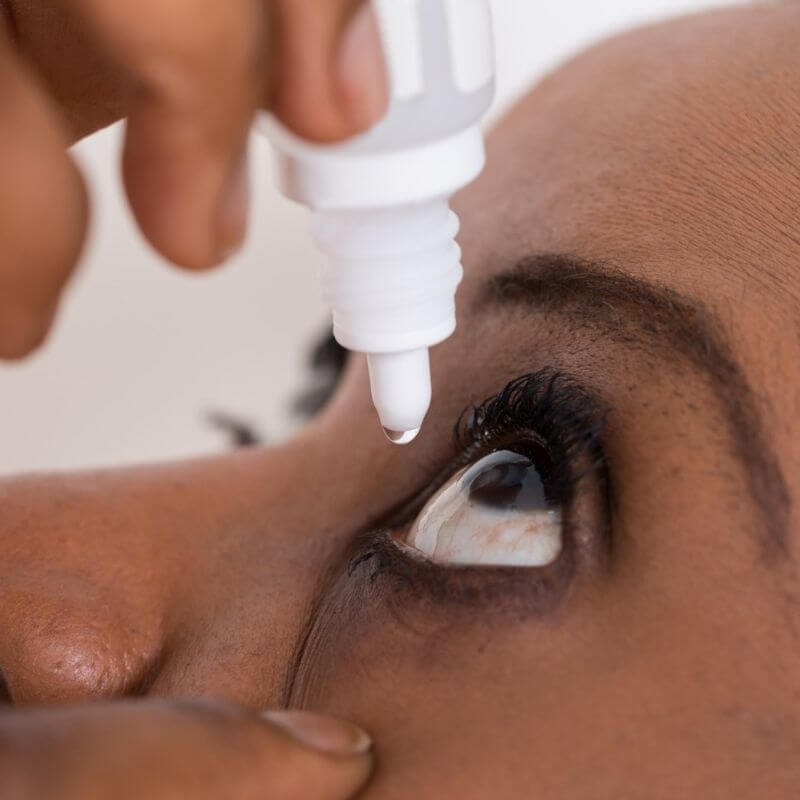Sometimes, people get new eyeglasses and do not feel comfortable in them. Rather than abandon the glasses, the best thing to do is to find out the cause of the problem and get it solved. This can easily be done with the help of the eye doctor.
Here are common causes of problems with new eyeglasses and how to solve them.
Difficulty adapting to the lenses
This is a common people experience with their new eyeglasses. It is most common among first-time wearers or those who have not worn glasses for a long time, particularly those whose new glasses have progressive lenses or cylindrical lenses.
To deal with this problem,
- Wear the eyeglasses to help you adapt to it. The more you wear them, the faster you will get used to them. For most people, this takes a few days to about 2 weeks.
- If you are still unable to adapt to the lenses after this period, take them back to your doctor to change the lens type or make adjustments to help you adapt.
Wrong lens prescription
While this is often the first assumption that people have when they are having issues with their new eyeglasses, it is not common with professionally dispensed lenses.
However, if the problem is with the lens prescription, bring it back to the clinic. The eye doctor will repeat the eyeglass test (refraction) and confirm the power of your lenses. Then, your glasses will be refitted with the correct lens prescription.
Poor fitting frames
Poor fitting frames may be too tight or too loose.
Tight frames often cause discomfort because the temples or nose bridge may be digging into your skin. Loose frames, on the other hand, can cause distractions. They may slide down your nose such that you find yourself frequently adjusting them to see clearly.
To deal with this problem,
- Try adjusting the frame’s temple and nose pads to get a better fit.
- If the first option does not work, change your frame. Note that this may also involve changing the lenses since they have already been cut to fit the uncomfortable frame.
To ensure that you purchase a frame that suits you, fit it on your face before buying it. If you must buy online, find out your frame size and the shape of the frame that suits your face, and then search online for a frame that has your exact specifications.
Incorrect lens fitting measurements
Sometimes people have challenges with their glasses because the lens fitting measurements are not correct. This is common among people whose lenses have multiple powers like bifocals and progressive lenses.
To solve this problem, the lens fitting measurements for your glasses will be taken or reviewed (if it was already taken). Then, your glasses will be refitted with the new measurements. Key fitting measurements required are your pupillary distance and segment height.
Seeing light reflections
Light reflections on your glasses can be distracting and can lead to eyestrain.
To solve this problem, upgrade your lenses to ones that have an anti-reflective coating. The coating will eliminate the reflections and make your vision clearer and more comfortable.
Experiencing light sensitivity (photophobia)
If you experience light sensitivity while wearing your glasses, you have 2 options:
- Get a separate pair of prescription sunglasses that you can wear when you are outside.
- Change your lenses to photochromic lenses. These are light-adaptive lenses that darken when you are out in the sun and clear up when you get indoors. They help eliminate glare and protect your eyes form harmful UV rays, thereby keeping your vision clear, comfortable and safe. Photochromic lenses also eliminate the need to carry two separate eyeglasses for indoor and outdoor use. This makes them an all-in-one solution for people who are sensitive to light.
Recent health condition
Sometimes, the problem isn’t with the glasses but with your health. Patients who have health conditions like diabetes and hypertension can experience sudden changes in their vision.
The solution, in this case, is to consult your physician and get the health problem taken care of. Usually, your vision would return to normal once your health condition is under control.

